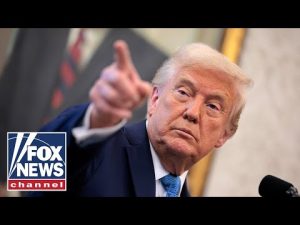It seems like there’s a game of cat and mouse unfolding on the international stage, with China and the United States each trying to outwit the other. Senators in Washington are signaling potential breakthroughs, suggesting that China may be softening in its long-running trade war with the U.S. After years of aggressive tariffs and retaliatory measures, Beijing is reportedly easing up on its hefty 125% tariffs on American goods. And for anyone who has watched the intricate dance of international trade, this is no small feat.
According to reports, the Chinese government is beginning to allow some U.S. products, such as aviation parts, semiconductors, and medical devices, to enter the country without the usual barrage of tariffs. For Chinese leader Xi Jinping, admitting that these products are necessary and irreplaceable is no easy task. After all, his legitimacy partly rests on the narrative that China is a global powerhouse, neck-and-neck with Uncle Sam.
On the flip side, President Trump, with his characteristic bravado, has positioned himself as the champion of the American economy against China’s long-standing aggressive trade practices. Despite claims from Beijing that there have been no recent negotiations, Trump insists he’s been in communication with Xi. This creates quite the international soap opera: the leader of the free world signaling progress, while China denies the very talks that presumably led to it. Who’s bluffing here?
Moreover, while China’s official statistics suggest a sprightly economic growth rate, analysts argue that the numbers don’t add up. If China’s economy were truly booming, why would they quietly reduce tariffs? It’s a bit like claiming to ace a test while secretly begging for extra credit. Rumors of a deflationary spiral could mean China’s economy is not as robust as the numbers suggest, which might explain why it has done an about-face under pressure from the Trump administration.
However, for all the hemming and hawing, the situation remains precarious. There’s a growing sense of danger that if China’s economic troubles deepen, it might resort to aggressive tactics outside its borders to squelch any internal dissent. Recent heightened military maneuvers targeting Taiwan and other nations are ominous signs. It’s a delicate balance that requires deft handling. Reducing tariffs on U.S. goods might just be the tip of the iceberg, and one has to wonder if more aggressive U.S. trade policies might be needed to ensure that China doesn’t simply return to its old tricks once the heat is off.







